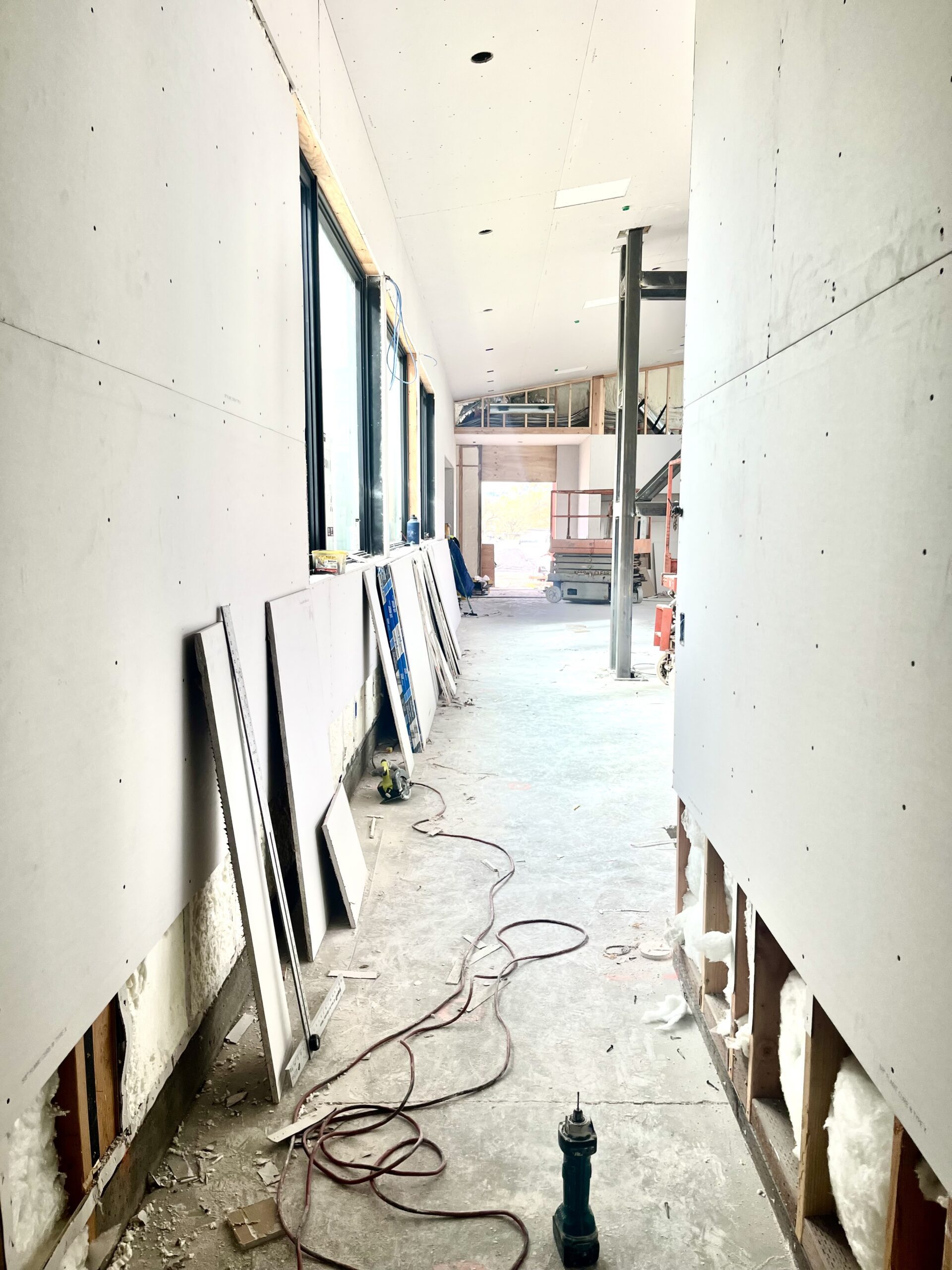That’s right! It’s sexy. And it’s sexy because once the drywall goes in, then the fun begins for the homeowner. This is the time when the dream starts to become real. All the work that’s been done with the interior designer starts to pay off – cabinets, countertops, paint, wallpaper, lighting — your home will begin to really take shape.
Drywall is a major milestone in the construction process and here’s why:
STRUCTURE COMPLETION: Before drywall can be installed, the framing (the skeleton of the building) must be fully completed. This includes the walls, roof, and floor structure. All the major framing work is done, ensuring that the building has its shape and skeleton in place.
 MECHANICAL, ELECTRICAL, and PLUMBING (MEP) SYSTEMS: At this point in the project, the essential MEP systems (like wiring, pipes, HVAC ducts, etc.) need to be installed or roughed in. This is done before drywall because the systems need to be hidden behind the walls once the drywall is up. Contractors will install wiring, pipes, and ventilation ducts within the walls, ensuring they’re in place before the drywall panels are attached.
MECHANICAL, ELECTRICAL, and PLUMBING (MEP) SYSTEMS: At this point in the project, the essential MEP systems (like wiring, pipes, HVAC ducts, etc.) need to be installed or roughed in. This is done before drywall because the systems need to be hidden behind the walls once the drywall is up. Contractors will install wiring, pipes, and ventilation ducts within the walls, ensuring they’re in place before the drywall panels are attached.
INSULATION AND SOUNDPROOFING: Once the MEP systems are roughed in, insulation is typically installed in the walls and ceilings. This helps with energy efficiency and soundproofing. The insulation is placed between the studs in the framing and is often done right before the drywall, as it needs to be protected by the drywall later.
DRYWALL AS A “SEALANT” STEP: Drywall essentially acts as the final layer of the building’s interior before the finishing stages. Once installed, the interior space begins to take shape, with the structure becoming less “exposed” and the building appearing more enclosed. This is when the space starts to feel like the final building, as walls and ceilings are no longer just studs, beams, and open spaces.
SURFACE PREPERATION: After the drywall is installed, it needs to be taped, mudded (with joint compound), sanded, and finished to create smooth, seamless walls. This can be a lengthy process, but it prepares the space for painting, flooring, and other interior finishes.
So, when drywall goes up, it means that much of the rough construction is done.
FINISHING STAGES: Systems are in place, and it’s ready to move into the detailed finishing stages, such as flooring, cabinetry, painting, and other interior touches. This marks the shift from “construction” to “finishing” work. It’s a crucial phase because once the drywall is up, the space becomes more defined and livable. This is yet another reason to work with an interior designer. In order for the project to move forward –months of planning have taken place and you’re ready to see the interior come together making it a real home.

